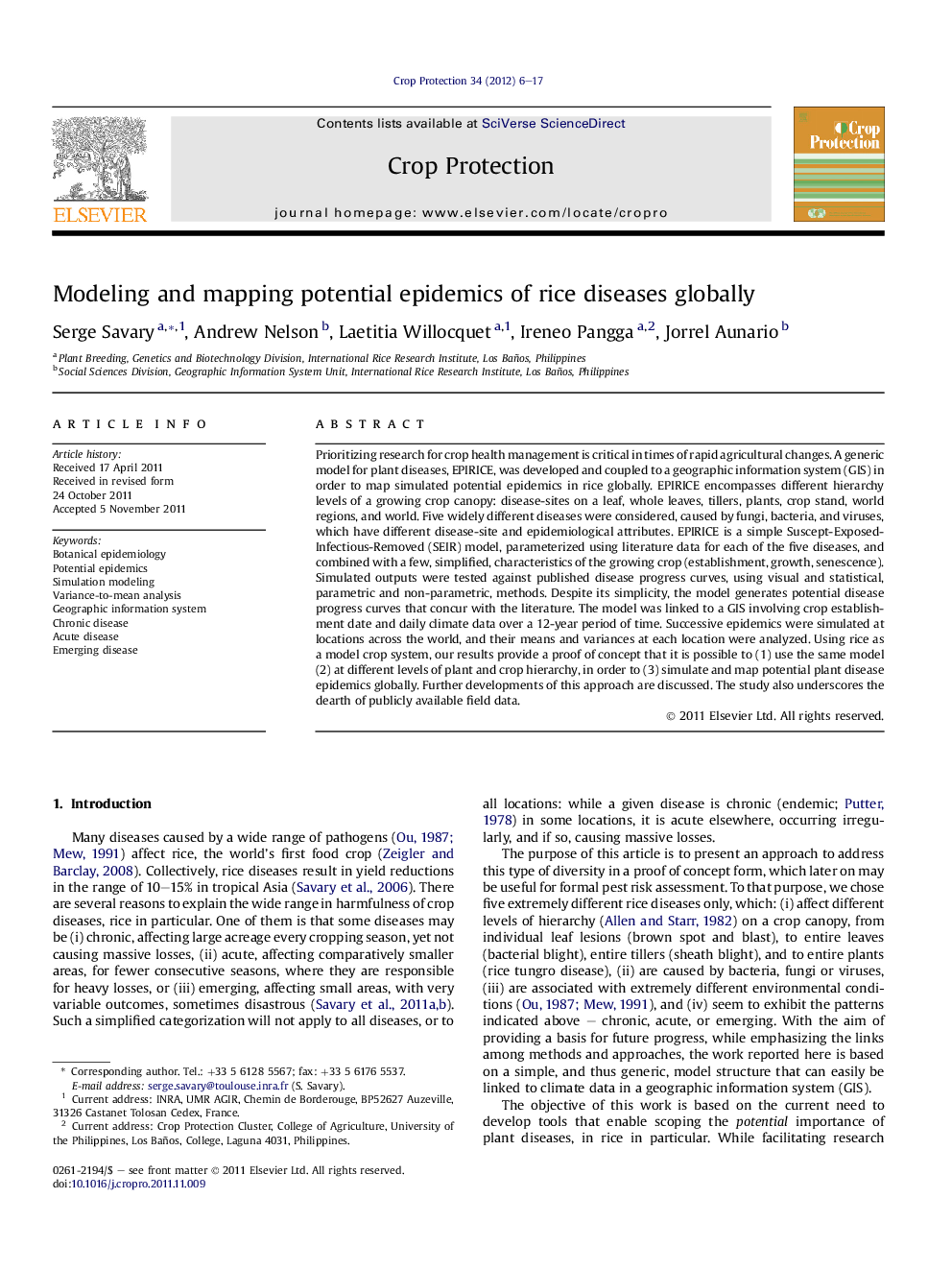| کد مقاله | کد نشریه | سال انتشار | مقاله انگلیسی | نسخه تمام متن |
|---|---|---|---|---|
| 4506393 | 1624353 | 2012 | 12 صفحه PDF | دانلود رایگان |

Prioritizing research for crop health management is critical in times of rapid agricultural changes. A generic model for plant diseases, EPIRICE, was developed and coupled to a geographic information system (GIS) in order to map simulated potential epidemics in rice globally. EPIRICE encompasses different hierarchy levels of a growing crop canopy: disease-sites on a leaf, whole leaves, tillers, plants, crop stand, world regions, and world. Five widely different diseases were considered, caused by fungi, bacteria, and viruses, which have different disease-site and epidemiological attributes. EPIRICE is a simple Suscept-Exposed-Infectious-Removed (SEIR) model, parameterized using literature data for each of the five diseases, and combined with a few, simplified, characteristics of the growing crop (establishment, growth, senescence). Simulated outputs were tested against published disease progress curves, using visual and statistical, parametric and non-parametric, methods. Despite its simplicity, the model generates potential disease progress curves that concur with the literature. The model was linked to a GIS involving crop establishment date and daily climate data over a 12-year period of time. Successive epidemics were simulated at locations across the world, and their means and variances at each location were analyzed. Using rice as a model crop system, our results provide a proof of concept that it is possible to (1) use the same model (2) at different levels of plant and crop hierarchy, in order to (3) simulate and map potential plant disease epidemics globally. Further developments of this approach are discussed. The study also underscores the dearth of publicly available field data.
► A simulation model, EPIRICE, was parameterized for five widely different rice diseases.
► EPIRICE covers hierarchy levels (tissue sites, plants, fields, to world eco-regions).
► The model was linked to a GIS for 12 years of world climate and crop establishment.
► The same model can model and map potential plant disease epidemics globally.
► Chronic, acute, and emerging plant diseases can thus be mapped globally.
Journal: Crop Protection - Volume 34, April 2012, Pages 6–17